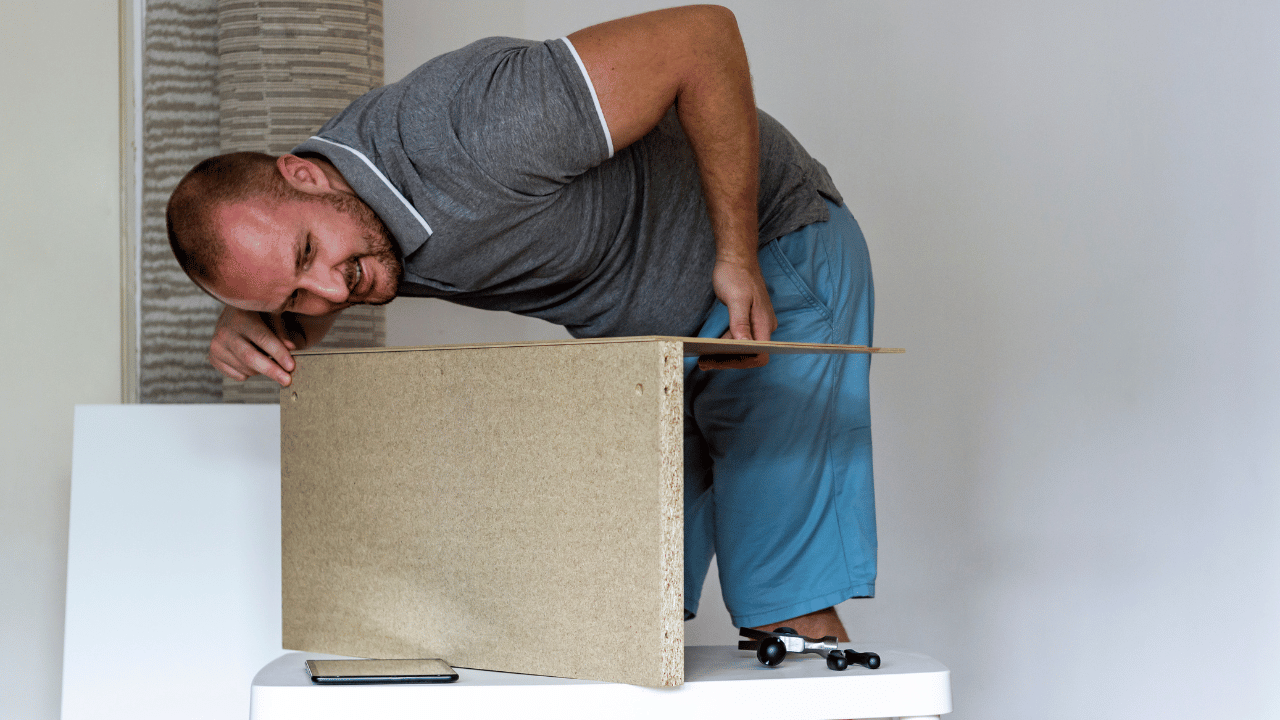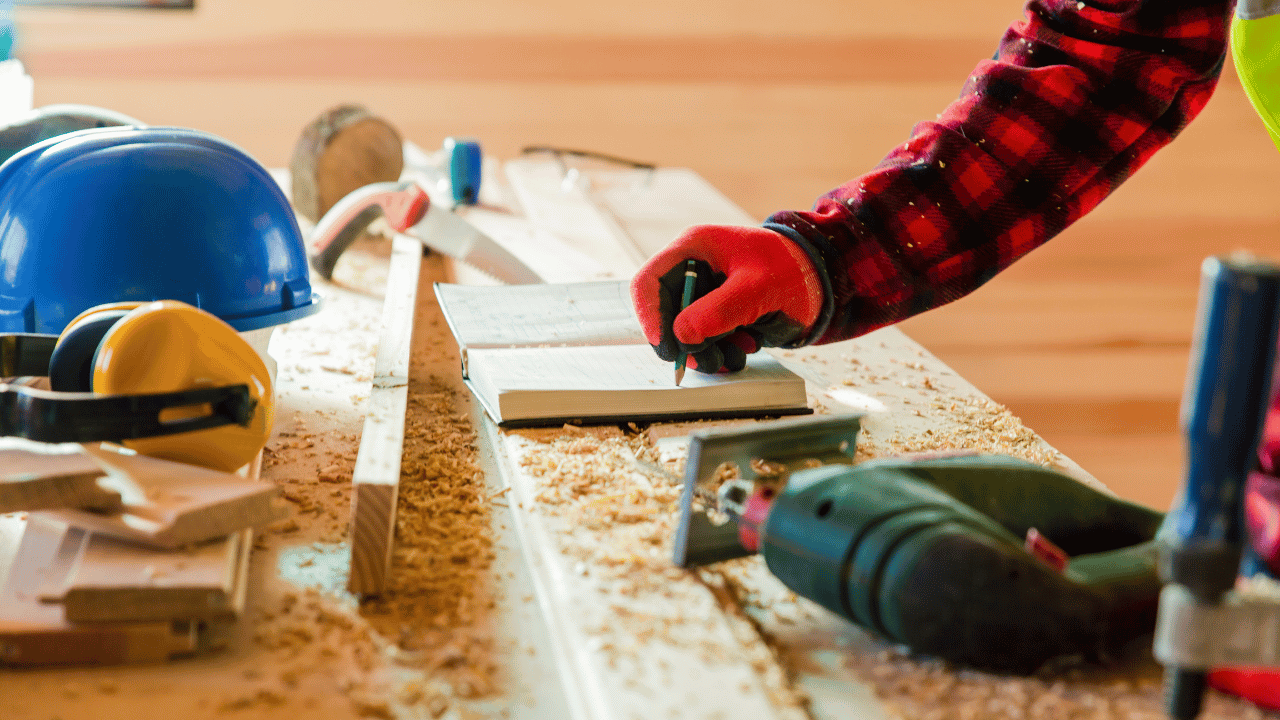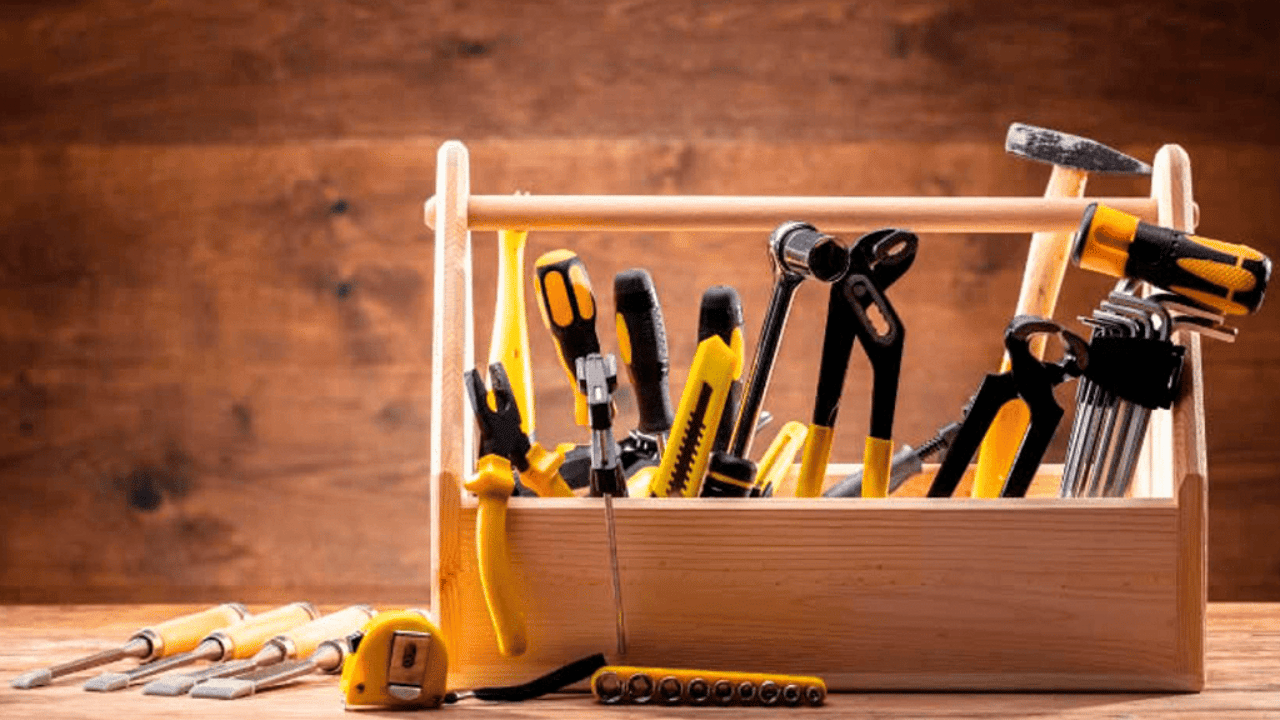Last Updated on November 27, 2023 by Pro Handyman Australia – Editorial Team
The craftsmanship of shaping, joining, and working with timber is an intricate blend of skill and precision. To truly master this craft, one needs not only the passion and dexterity but also the right set of tools.
The Carpenter’s Arsenal
A carpenter’s array of tools, whether attached to their belt or neatly organized on a workbench, is always at the ready. These tools are an extension of the carpenter’s hand, allowing for the transformation of raw wood into functional and aesthetic masterpieces.
Investing in Quality
Choosing quality tools is paramount. Not only do they offer reliability and durability, but they also ensure safety during operations. Moreover, high-quality tools facilitate smoother and more efficient work, making them indispensable to professionals. Remember, in the realm of carpentry, the right tools can elevate your craft to new heights. Researching, like finding out what is a hacksaw, is also crucial.
The Carpenter’s Essential Toolkit

Claw Hammer: More Than Just Nailing
While I occasionally use my claw hammer to drive nails, its versatility extends far beyond that. Paired with a chisel or nail set, it’s a formidable tool. It’s also perfect for demolition tasks and forceful adjustments. For a dependable and multipurpose choice, consider a curved claw model with a steel handle, preferably around 16 oz.
Tape Measure: The Carpenter’s Companion
Among all my tools, I find myself reaching for the tape measure the most. Opt for a tape that’s about 25 ft. long and one inch wide, which suffices for most tasks. Quality is crucial; ensuring a rigid blade and a reliable spring is vital. A basic measure showcasing 16-in. centers, along with detailed measurements, is optimal.
Combination Square: The Adjustable All-rounder
A combination square, such as the IRWIN model, is invaluable for marking common cuts like square and 45 degrees. Due to its adjustable nature, I often use mine as a marking and depth gauge. A size that can conveniently fit in a nail apron is ideal.
Chisel: The Versatile Cutter
Though I own chisels of varying widths, the 3/4 wide one is a daily staple. While primarily a cutting tool, a chisel can also double as a pry bar, putty knife, or even a paint can opener. Aim for mid-range quality, ensuring a metal cap for hammer-driven tasks.
Utility Knife: Precision and Simplicity
For precision cuts in drywall, paper, plastic, or even for shaving wood, a utility knife is essential. Opt for retracting blades for safety, and always prioritize quality when replacing blades.
Diagonal Cutting Pliers: The Nail Remover
Essential for electricians, these pliers are equally crucial for carpenters, especially for nail removal, cord repairs, or demolition tasks. A quality 8-inch pair is a good investment.
Nail Set: Setting the Standards
Despite the prevalence of nail guns, there are times when manual nail setting becomes necessary. A 3/32 inch nail set is particularly handy, also suitable for tasks like marking drill bit starting points or even demo work.
Pry Bar: The Delicate Demolition Tool
Mistakes happen, and when they do, a pry bar is there to assist. Especially for trim carpentry, a small, flat bar minimizes damage during removal tasks.
Vice Grips: The Tool for Tools
Though not inherently for carpentry, vice grips are perfect for adjusting and repairing other tools. A small 5-inch pair, like the locking ones from IRWIN, can be a time saver.
Screwdriver: The Multipurpose Maestro
From adjusting cabinet hardware to setting appliances, a multipurpose screwdriver is a must-have. Look for models that allow tip swapping to cover a range of tasks.
Block Plane: Finishing Touches
For trim carpentry and finish work, a block plane is indispensable. It’s perfect for refining trim joints, smoothing edges, or erasing saw marks. Investing in a quality one will guarantee longevity.
The Importance of the Carpenter’s Essential Toolkit for Beginners

Starting in carpentry can be both exciting and daunting. The world of woodworking offers a myriad of creative opportunities, from crafting delicate furniture pieces to building robust home structures. But as any seasoned carpenter will tell you, embarking on this journey without the right tools is akin to a painter without his brushes. Here’s why beginners in carpentry need the essential toolkit:
1. Foundation of Skills:
To become proficient in any craft, one must start with the basics. The carpenter’s essential toolkit contains the foundational tools that every novice needs to master before advancing to more specialized equipment. This foundational knowledge is crucial in building a solid skill set for more complex projects.
2. Quality of Work:
The right tools can drastically enhance the precision and finish of your work. For instance, using a proper chisel will give clean cuts, while a high-quality tape measure ensures accurate measurements. With the essential toolkit, beginners can ensure the quality and accuracy of their projects from the start.
3. Safety:
Carpentry, if not approached with caution, can lead to accidents. The essential toolkit is designed with safety in mind. Tools like retractable utility knives and well-balanced hammers are tailored to reduce risks, ensuring that beginners can focus on mastering the craft instead of managing hazards.
4. Efficiency:
Time is of the essence in any craft. With the right tools, tasks that could take hours can be completed in minutes. For instance, a block plane can quickly smooth out rough edges, and a combination square can ensure perfect angles in no time. For beginners, this efficiency means more practice in less time, accelerating the learning curve.
5. Versatility:
The beauty of the carpenter’s essential toolkit is its versatility. Each tool is multipurpose, allowing beginners to tackle a range of projects without needing to invest in a vast array of specialized tools. This not only makes the toolkit cost-effective but also encourages beginners to experiment with different projects.
6. Confidence Building:
There’s a certain confidence that comes from knowing you have the right tools for the job. For beginners, this confidence can be the difference between persevering through challenges or giving up. With each tool mastered, novices build not only skills but also the self-assurance to take on more intricate projects.
7. Longevity and Value:
Investing in a high-quality essential toolkit means investing in tools that will last. For beginners, this is especially important. As skills grow, so does the understanding and appreciation for tools that can withstand the test of time, ensuring they remain reliable companions throughout the carpentry journey.
In conclusion, the carpenter’s essential toolkit is more than just a collection of tools. For beginners, it represents the first step into a world of creation, precision, and craftsmanship. With this toolkit, novices are well-equipped to embark on a rewarding journey into the realm of carpentry.
The Advantage of Having the Right Tools for New Carpenters
In the world of carpentry, having the right tools can make all the difference. As the saying goes, “A carpenter is only as good as his tools.” For new carpenters, stepping into this skilled trade can be overwhelming, especially given the vast array of tools available. However, equipping oneself with the essential tools not only eases the initial journey but also offers numerous advantages. Let’s delve into the benefits of having the right tools as a new carpenter.

1. Enhanced Efficiency and Productivity
One of the most immediate advantages of having the right set of tools is the increase in efficiency. With the correct tools in hand, tasks that may have taken hours using inadequate or makeshift tools can be completed in a fraction of the time. This efficiency can greatly increase a carpenter’s productivity, allowing for more tasks to be accomplished in a day.
2. Achieving Professional Results
Quality tools often lead to quality results. New carpenters aiming to establish their reputation in the field must ensure that their work is of the highest standard. The right tools allow for precision, accuracy, and a polished finish, factors that clients and employers highly value.
3. Safety First
Working with wood and heavy materials inevitably comes with risks. The right tools are designed with safety features that reduce the chances of accidents. For instance, a saw with an ergonomic grip reduces the chance of slips, while a modern electric drill may have safety locks to prevent unintentional operation.
4. Cost-Efficiency in the Long Run
While investing in a high-quality set of carpentry tools might seem expensive initially, it is cost-effective in the long run. Quality tools tend to have a longer lifespan, reducing the need for frequent replacements. Moreover, they can prevent costly mistakes or redoing work, saving both time and money.
5. Boosted Confidence
There’s a certain confidence that comes with knowing you have the right tools for the job. For new carpenters, this confidence can be crucial. It enables them to approach tasks with a positive mindset, ensuring better outcomes and client satisfaction.
6. Expanding Skill Set
With the right tools, new carpenters can venture into specialized areas of carpentry, such as joinery or cabinetry. Owning a diverse set of tools allows them to practice and hone different skills, making them more versatile and marketable in the industry.
7. Ensuring Ergonomic and Physical Well-being
Modern carpentry tools are often designed with ergonomics in mind. Using tools that fit well in the hand and reduce strain can prevent physical issues like carpal tunnel syndrome or back pain, conditions that carpenters can be prone to given the nature of their work.

8. Inspiring Creativity
Having access to a range of tools can inspire creativity. New carpenters can experiment with designs, joinery techniques, and finishes, allowing them to develop a unique style and approach to their craft.
9. Client Trust and Credibility
When clients or employers see a carpenter equipped with professional-grade tools, it instills a sense of trust. It communicates dedication to the craft and a commitment to delivering the best possible work.
10. Continuous Learning and Upgradation
The world of carpentry is ever-evolving, with new tools and technologies emerging regularly. By investing in the right tools, carpenters also commit to a journey of continuous learning, keeping themselves updated with the latest in the field.
For new carpenters, stepping into the professional arena can be a daunting experience. However, by arming themselves with the essential tools of the trade, they not only set themselves up for success but also enjoy a plethora of benefits, from safety and efficiency to creativity and marketability. In the world of carpentry, the right tools truly are a carpenter’s best ally.
Conclusion

Embarking on a carpentry journey is an exhilarating endeavor, full of creative possibilities and the promise of handcrafted outcomes. Yet, as with any profession or hobby, the foundation for success is built on the tools one employs. For new carpenters, the importance of starting with the right toolkit cannot be understated. These essential tools not only pave the way for precision and quality but also ensure safety and efficiency. By investing in these fundamental instruments, novice carpenters set themselves up for a smoother learning curve, fewer setbacks, and the ability to tackle diverse projects with confidence. Remember, in the world of woodworking, it’s often the craftsman’s intimate understanding and skillful use of their tools that transform raw materials into masterpieces. So, as you set out on this path, equip yourself wisely, and watch as your carpentry dreams take shape.
